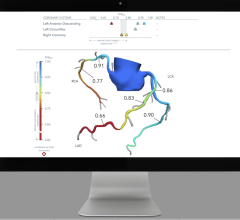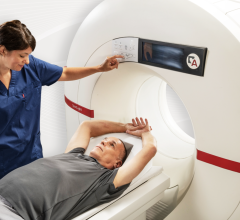
July 10, 2012 — Based on its recent analysis of workflow solutions for the computed tomography (CT) imaging market, Frost & Sullivan recognized Siemens Healthcare with the 2012 North American Frost & Sullivan Award for Customer Value Enhancement. The company's FAST CARE solution that works with Siemens' Somatom Definition AS and Flash scanners address the diverse needs of CT technologists, physicians and patients alike.
"Consistent pressure to leverage imaging services and patient care in a fast-growing environment have made workflow and productivity top priorities for CT image service providers across the U.S.," said Frost & Sullivan Industry Analyst Roberto Aranibar. "The challenge for providers lies not only in increasing the rate at which imaging procedures are performed, but also in delivering exams that continue to meet physician and industry expectations for image quality, radiation dose and patient care."
FAST (Fully Assisting Scanner Technologies) and CARE (Combined Applications to Reduce Exposure), the two components of FAST CARE, potentially make it possible for service providers to streamline workflow and maximize productivity while maintaining high image quality with low radiation dose, and enabling the delivery of patient-centric healthcare.
Siemens' FAST solutions are designed to simplify and expedite tasks for the imaging technologist throughout a procedure—planning, setup, scanning, image reconstruction and data evaluation. It may reduce time-intensive and technically difficult tasks to a single click of a mouse. The highly automated operation of FAST solutions also enables consistent delivery of high-quality images. For instance, FAST Planning automates scan and reconstruction ranges, potentially speeding and simplifying the process of setting up an organ-targeted scan. FAST Adjust may streamline workflow by replacing manual scan parameter adjustment with a single mouse click. FAST also includes solutions designed to improve workflow efficiency for specific clinical applications, such as FAST Spine that automates the setup of reconstruction modes for individual vertebrae and discs during spinal exams, a task that can take up to half an hour when performed manually.
CARE kV is a feature that quickly and accurately optimizes kV and mA settings according to each patient and exam type, limiting the applied dose while maintaining high image quality. CARE Profile promotes more active management of dose in the user interface by displaying planned dose distribution over the defined scan range next to a patient's topogram.
Similarly, the Siemens CARE technologies are designed to expose patients to the lowest radiation dose necessary to achieve the specific diagnostic objectives of an imaging study, in accordance with the ALARA (as low as reasonably achievable) principle. Doses are actively managed through CARE Dashboard, the central interface window that provides a complete picture of all dose reduction features that are activated prior to initiating a scan. This at-a-glance overview makes it easy for technologists to manage dose reduction features and visually confirm that they are taking advantage of all possible dose-savings opportunities.
For more information: www.siemens.com/healthcare


 July 16, 2024
July 16, 2024 








